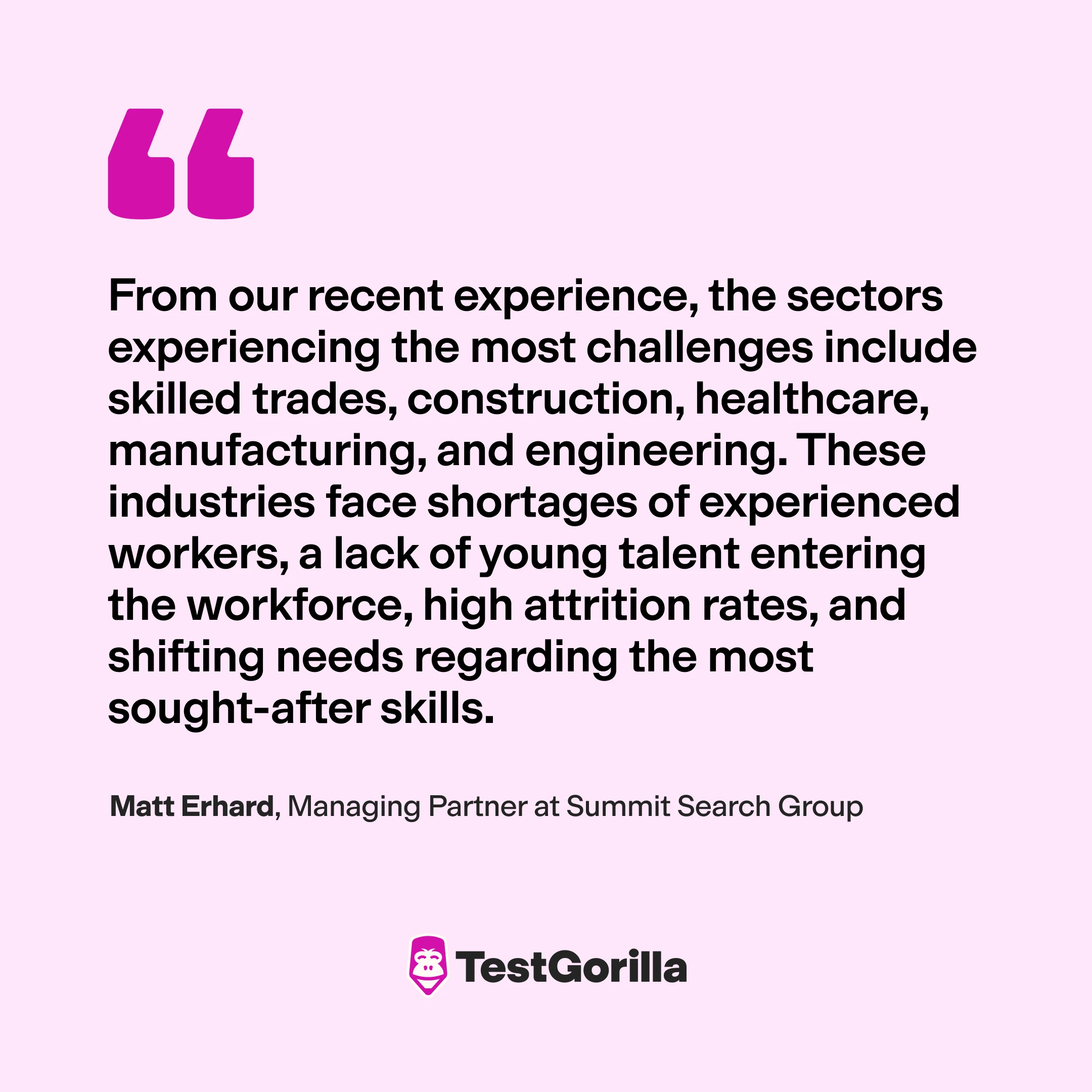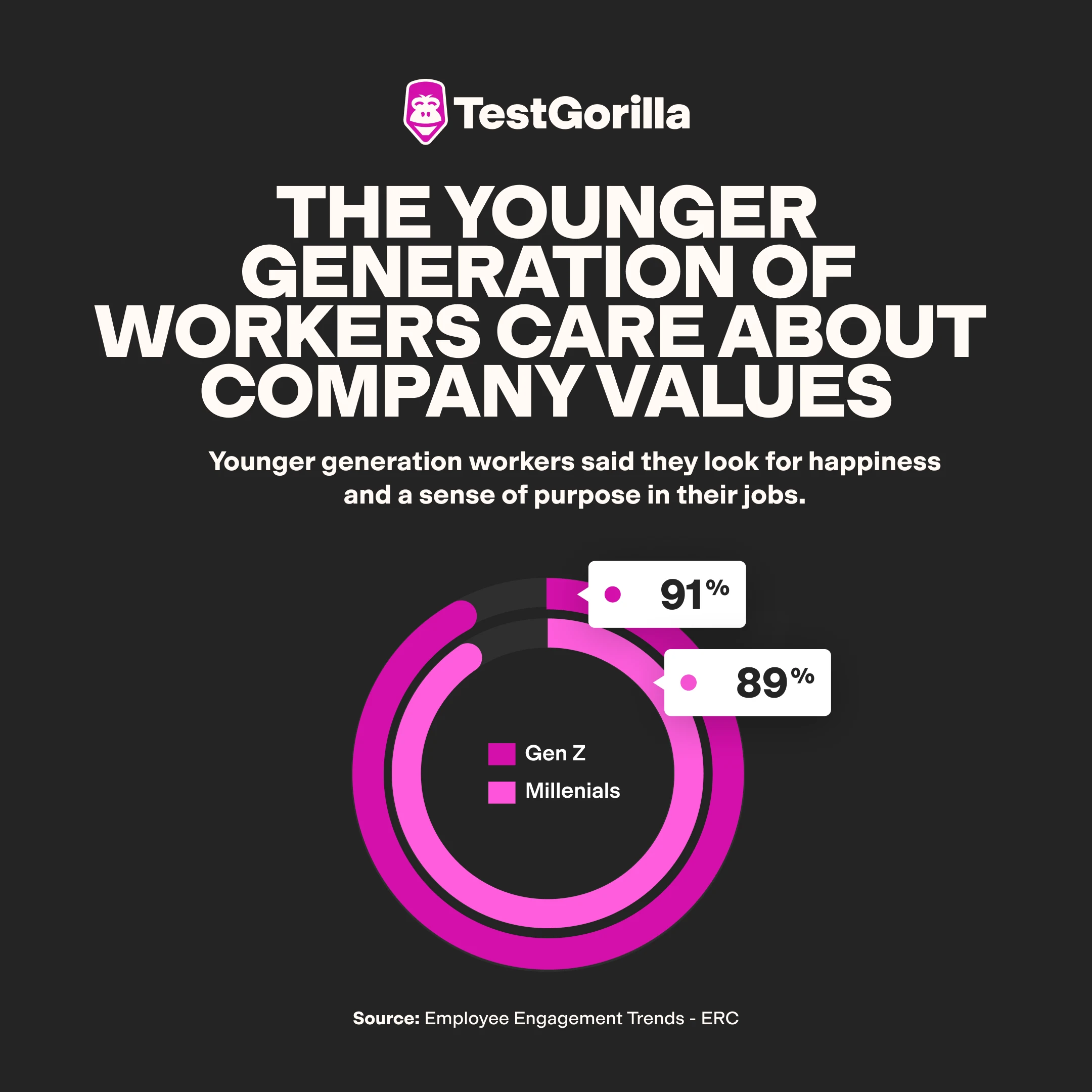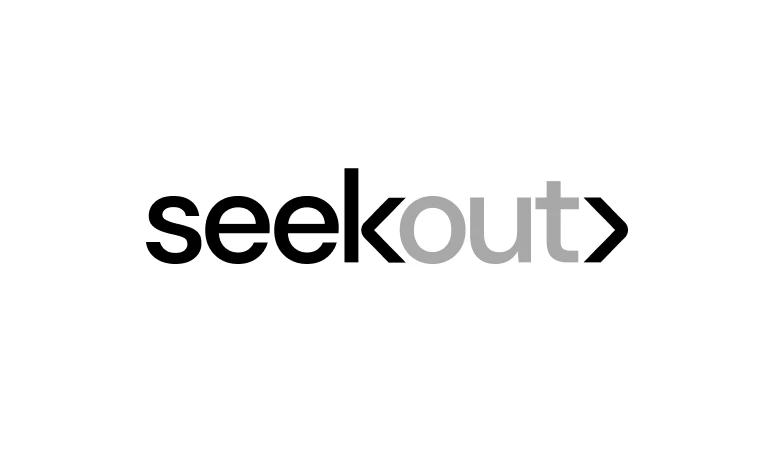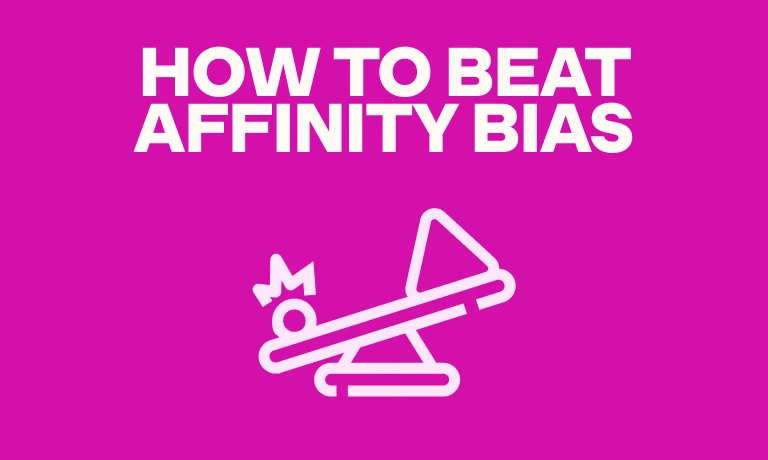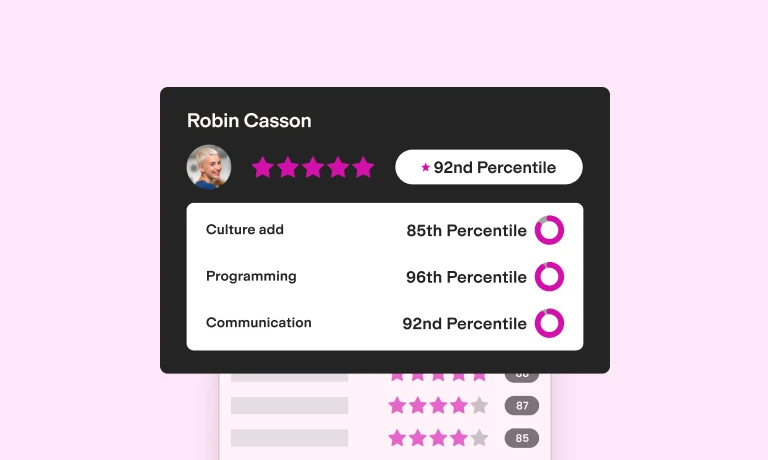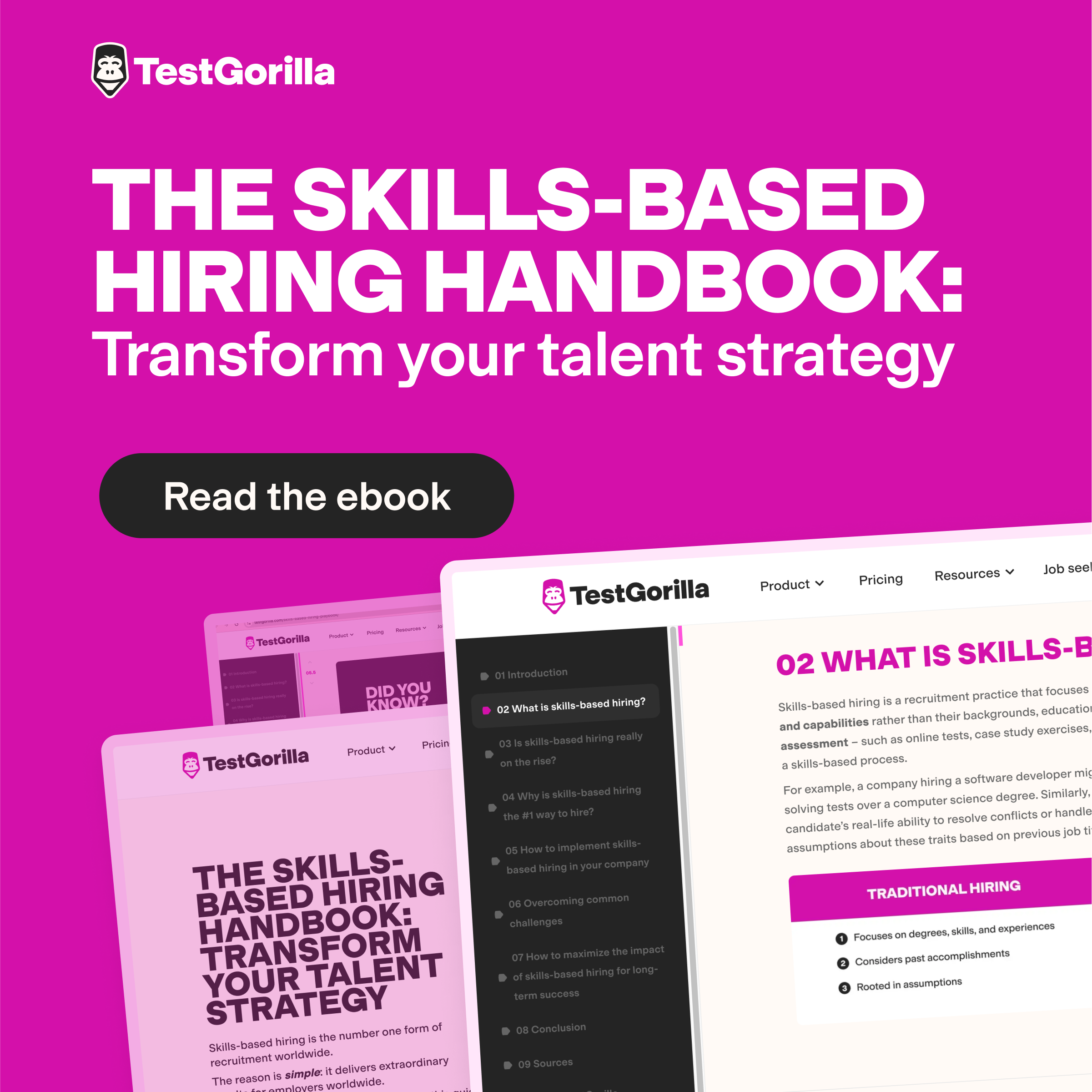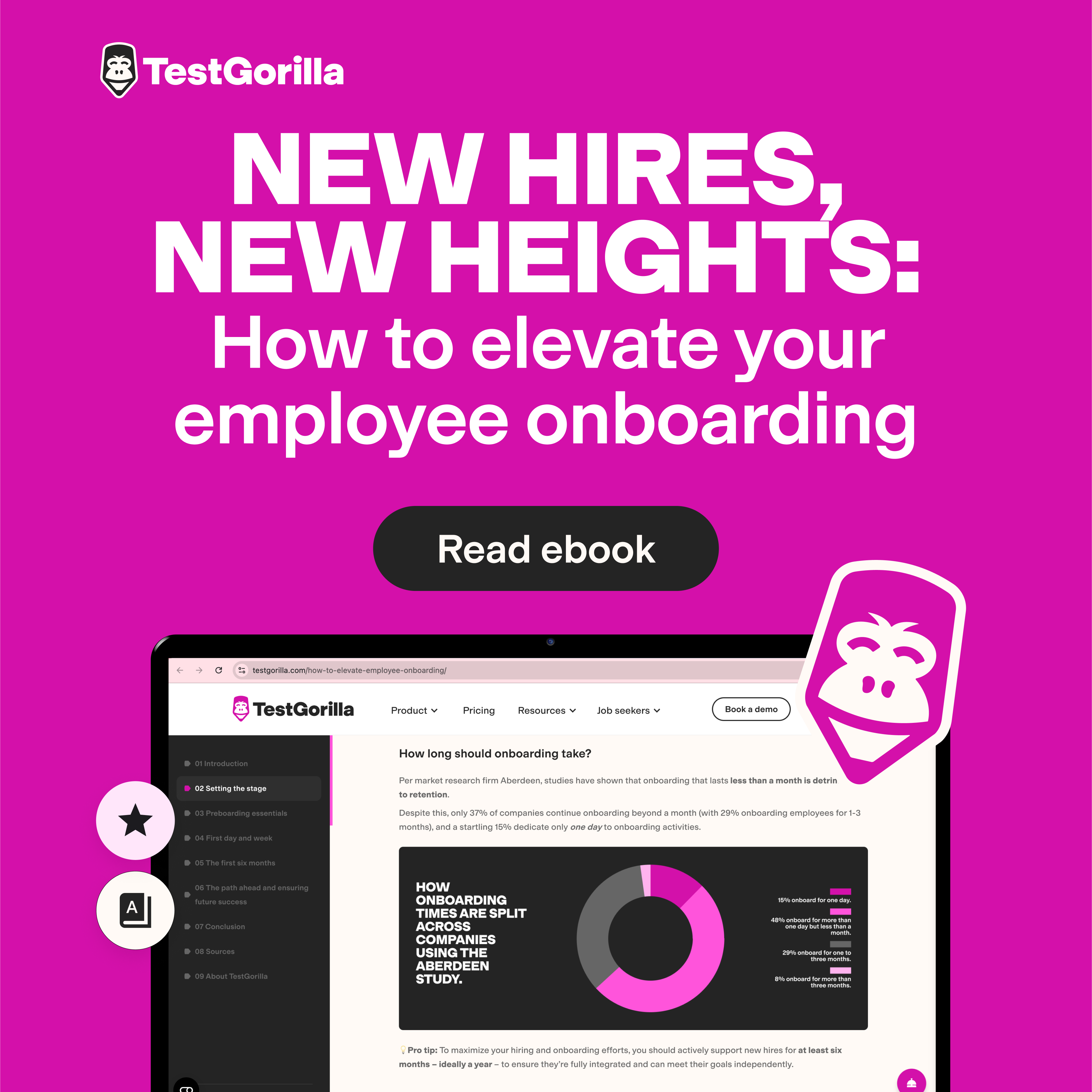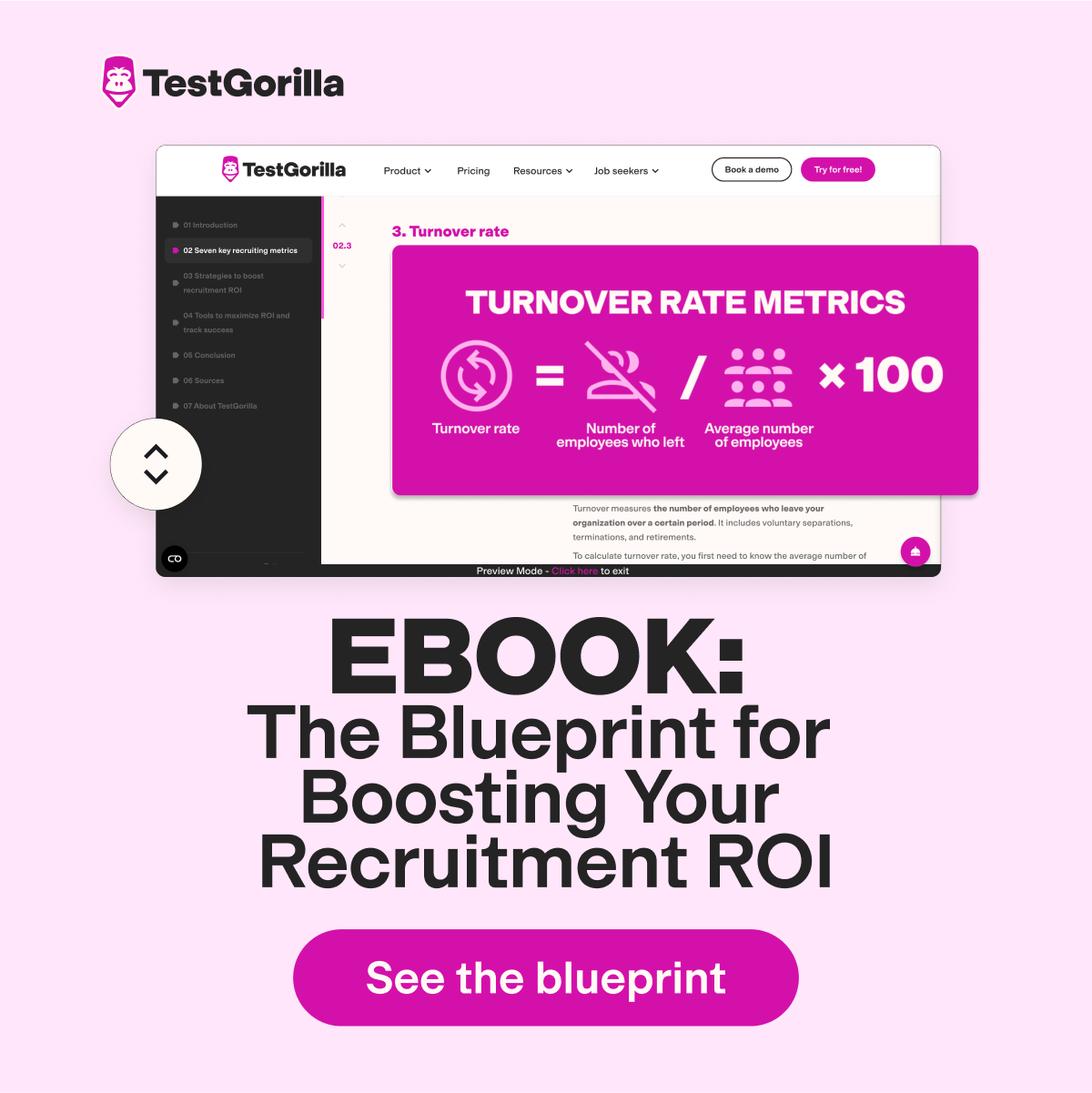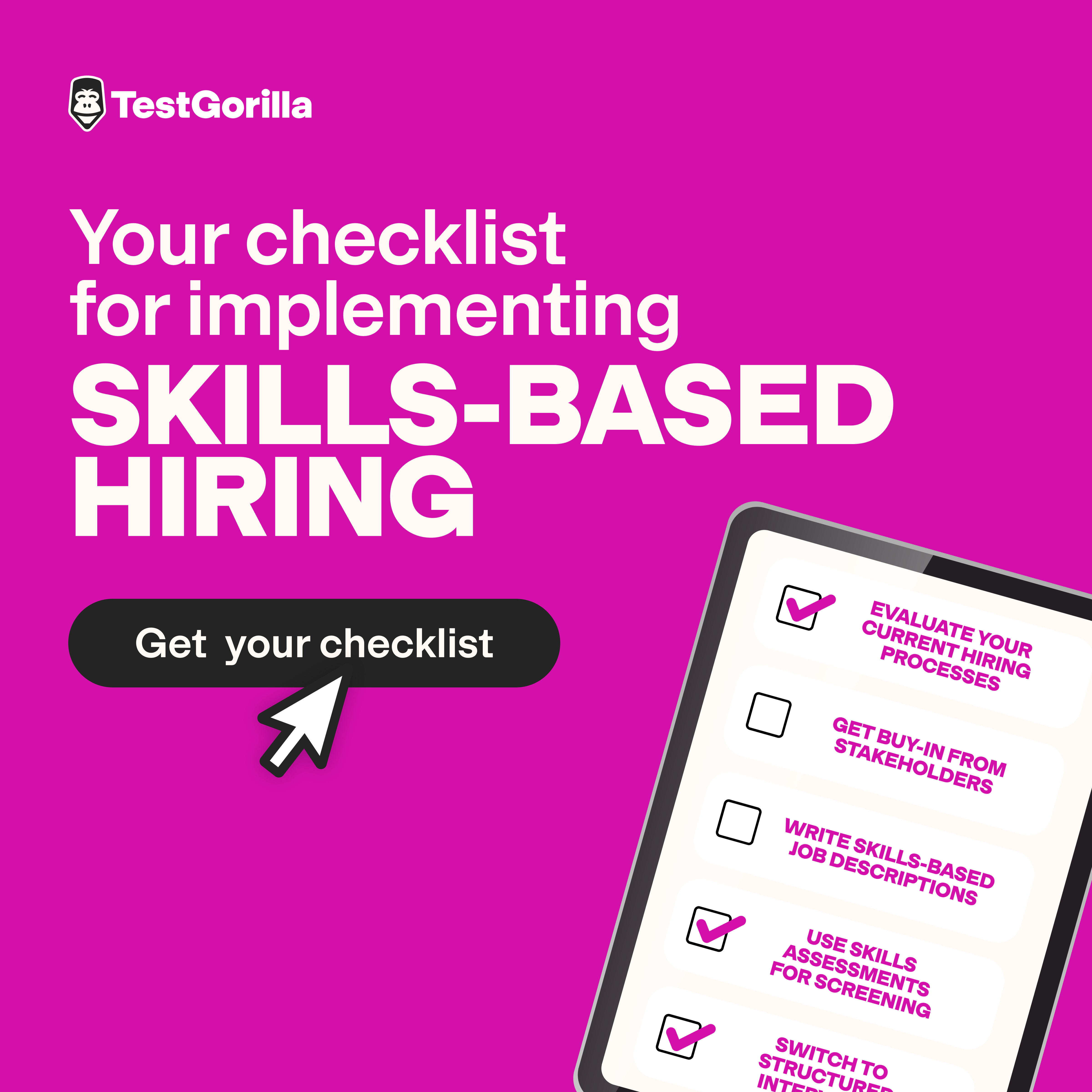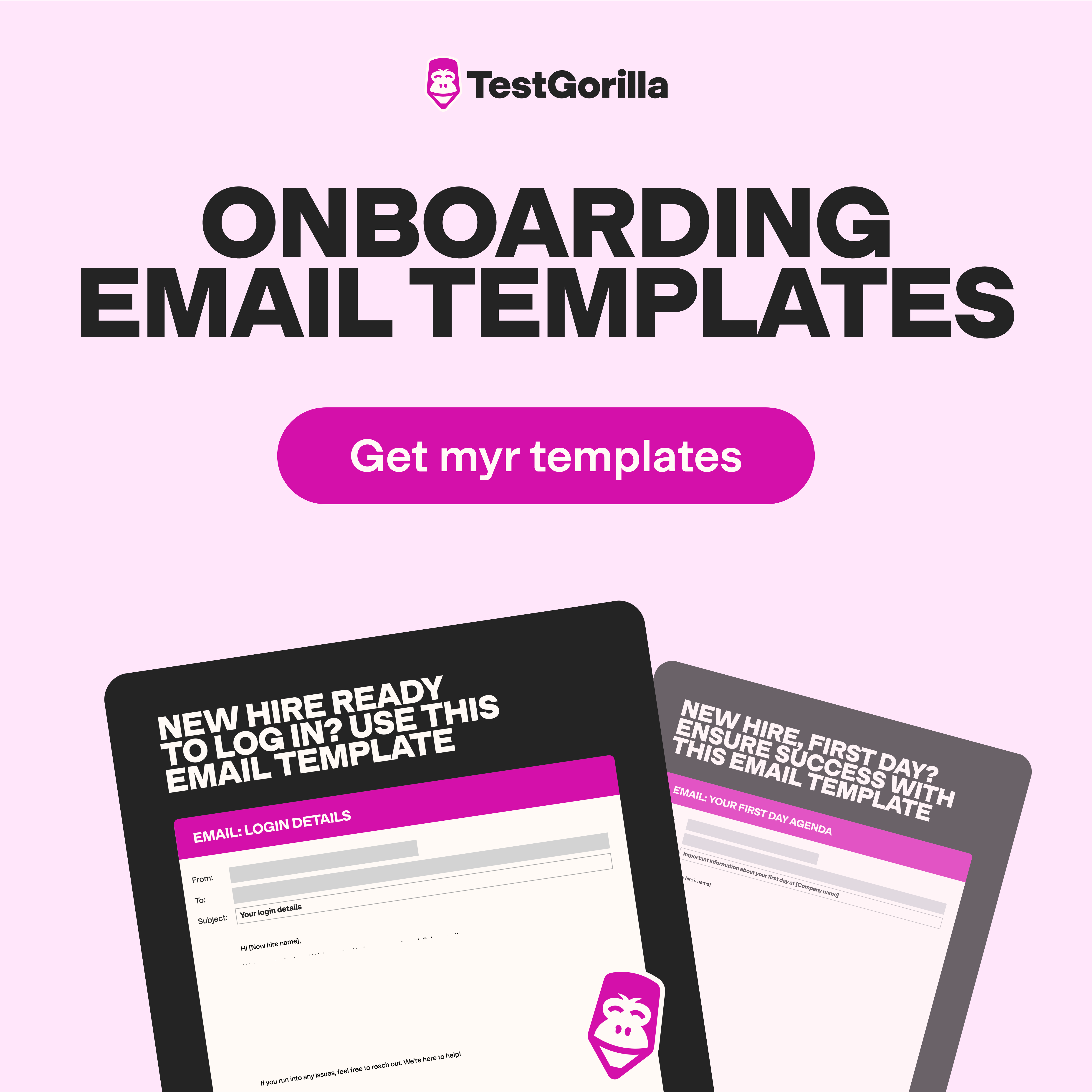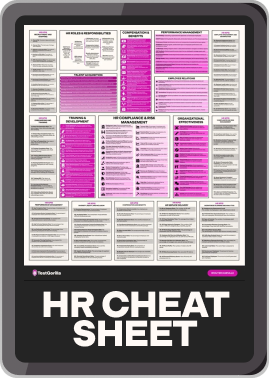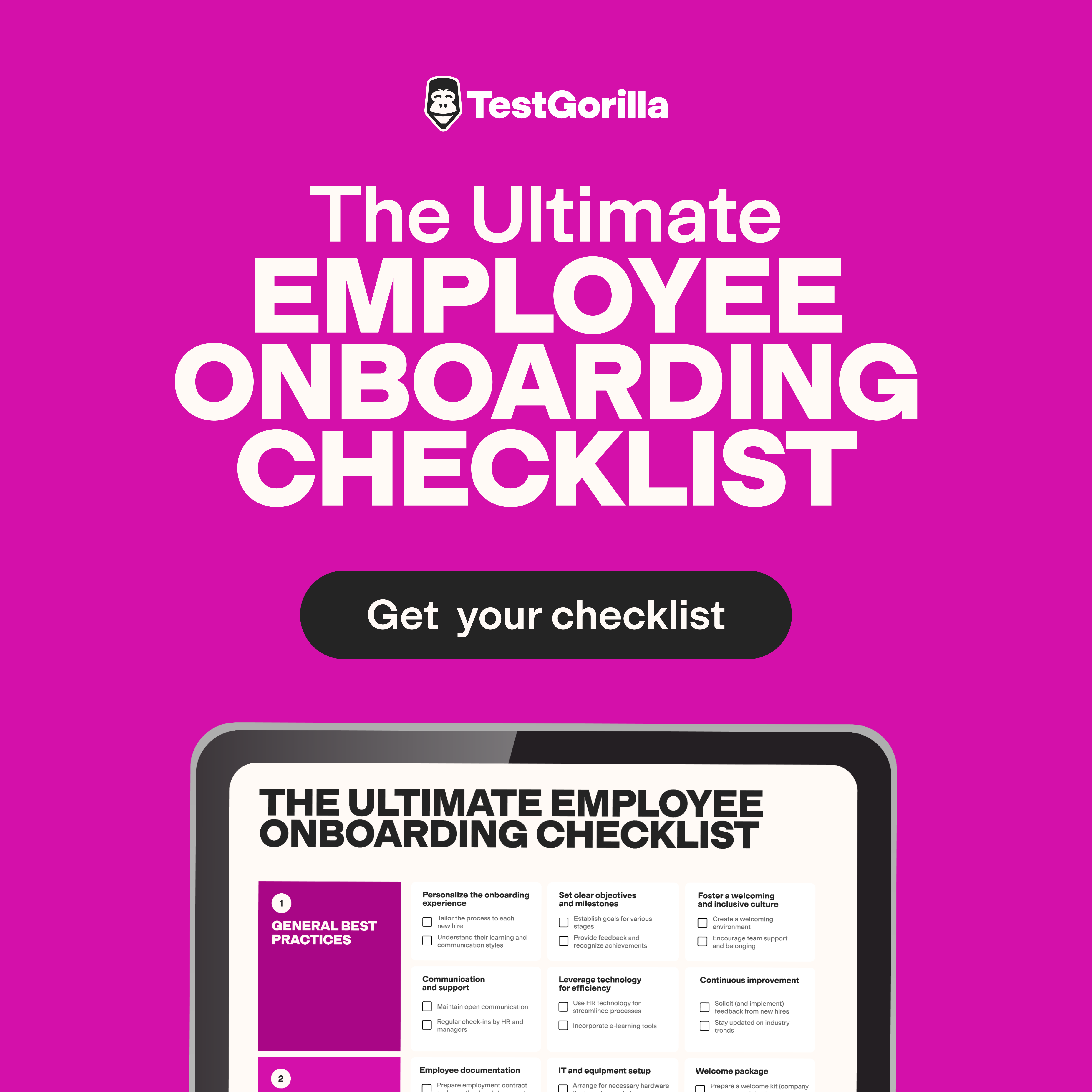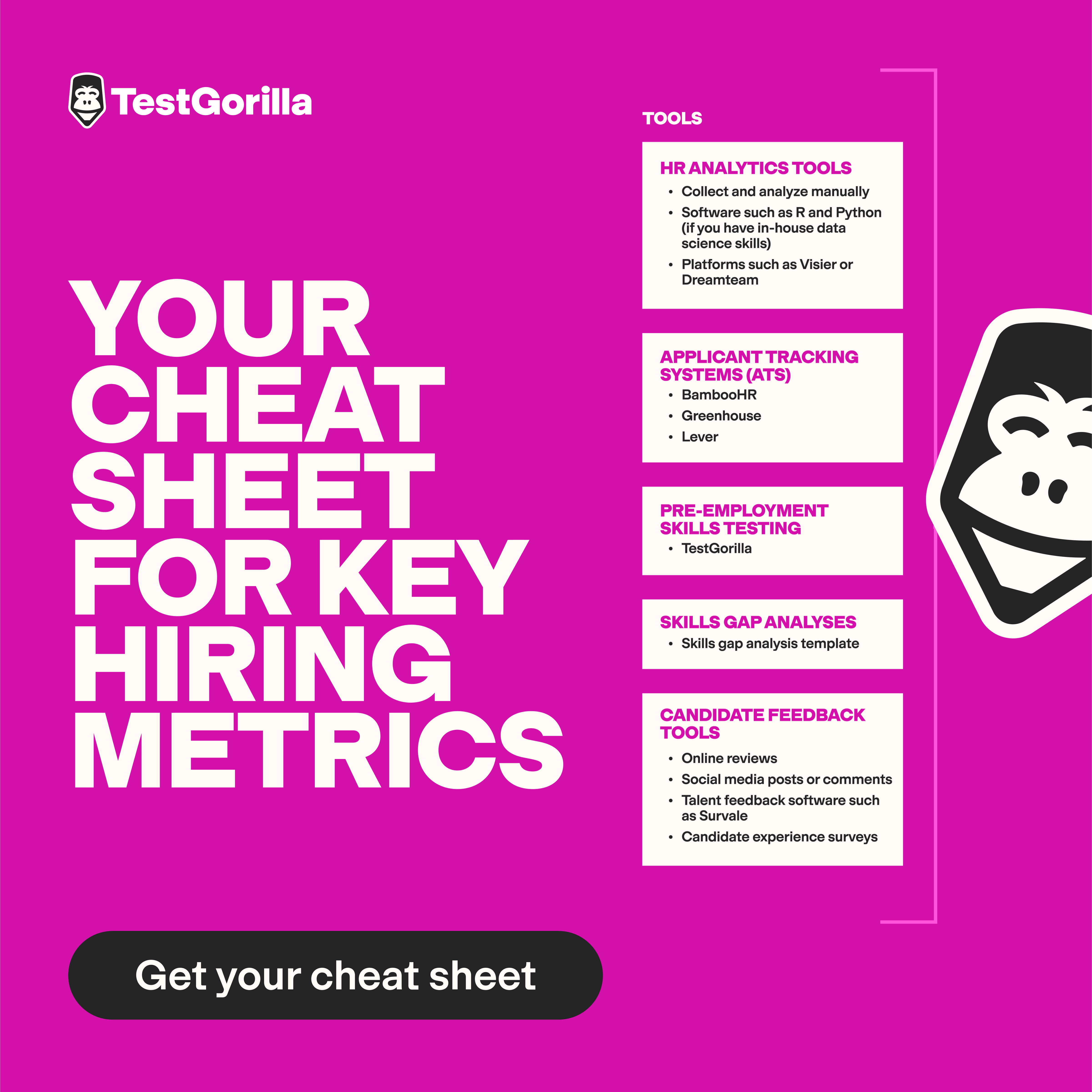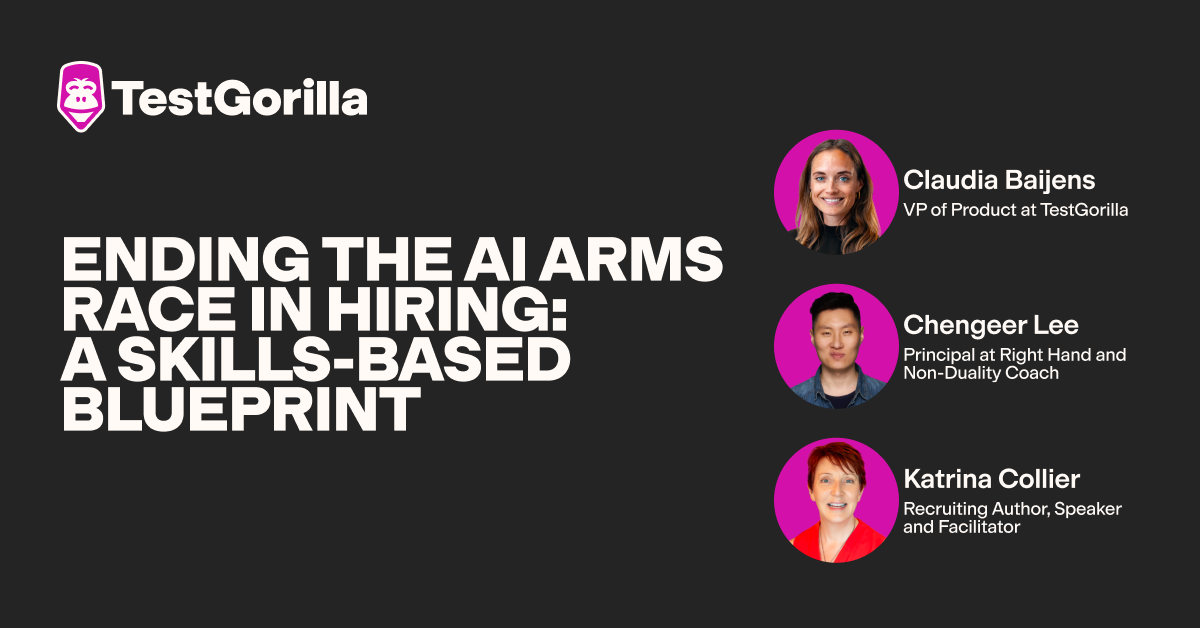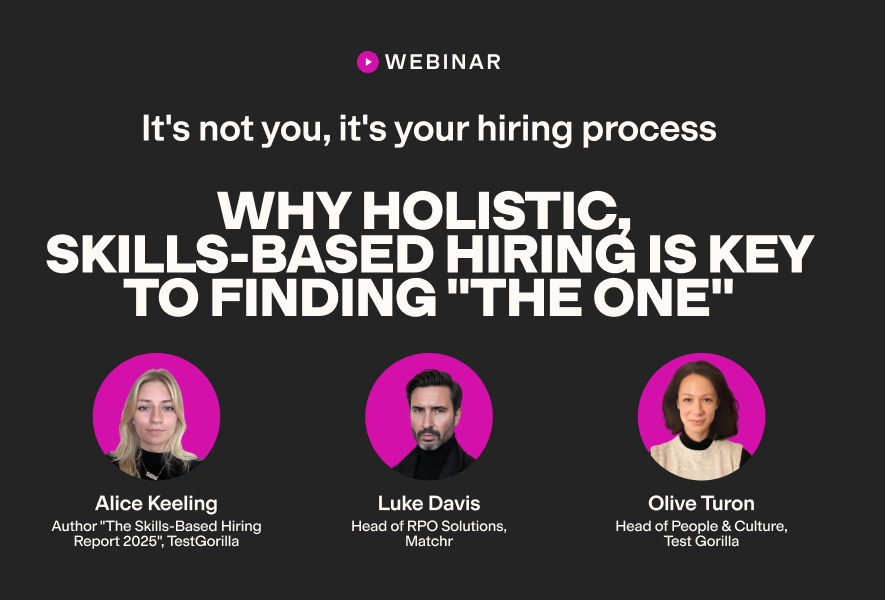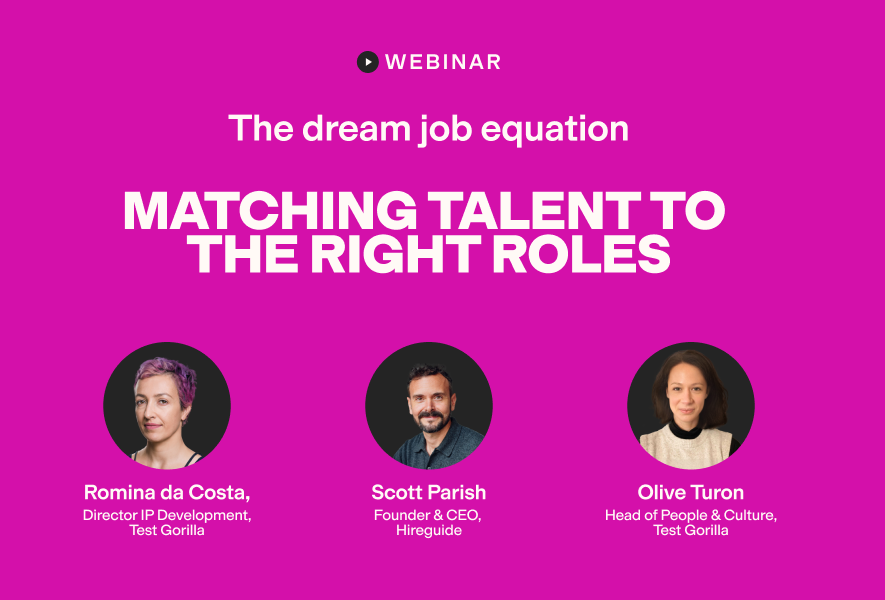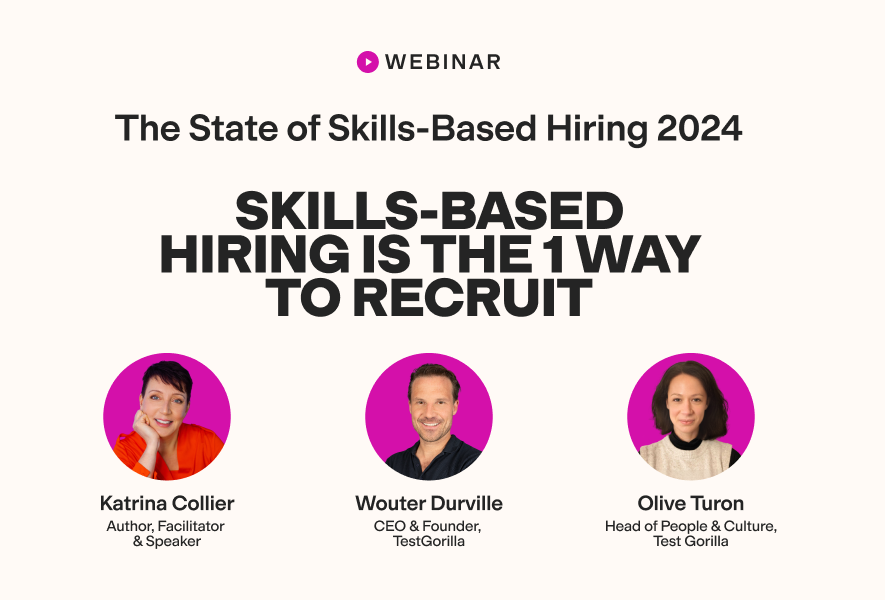According to TestGorilla’s latest State of Skills-Based Hiring Report, 63% of employers say it’s harder to find talent now than it was last year.
Everyone’s go-to theory? Talent shortages – a phrase you’ve probably heard a hundred times by now. What’s interesting, though, is that our report also revealed that 70% of candidates are finding it difficult to get jobs.
Doesn’t sound like just a talent shortage problem to me…
I think hiring has a match-making problem, and it’s wreaking havoc for everyone. Roles are staying open for too long, and great candidates are getting overlooked.
The silver lining? Unlike labor shortages, this problem can be fixed.
Table of contents
The job market is in a weird place
Right now, employers can’t find good labor to fill open roles, and job seekers can't find employment. Let's look at what's happening on both sides.
Talent shortages exist, but they're less problematic than you think
We spoke to Matt Erhard, Managing Partner at Summit Search Group, who explained that in many fields, retirements are accelerating, and there aren’t enough younger workers to replace those leaving the workforce.
“From our recent experience, the sectors experiencing the most challenges include skilled trades, construction, healthcare, manufacturing, and engineering. These industries face shortages of experienced workers, a lack of young talent entering the workforce, high attrition rates, and shifting needs regarding the most sought-after skills.”
The Financial Times also had an entire article focused on the dwindling number of younger workers in construction, citing that the intake of construction apprenticeships has fallen by more than a third over the past decade.
So, yes – some of these sectors are genuinely facing a labor shortage crisis. But in general, we’re no longer dealing with the tight labor market we experienced in the aftermath of COVID-19.
Things have changed since then. According to the Bureau of Labor Statistics:
Job openings in the US are at 7.8 million – significantly lower than the 2022 peak of 11.9 million jobs.
The US unemployment rate is at 4.1% and rising slowly, as we see a growing number of layoffs.
There are roughly 1.25 jobs for every unemployed person, compared to 1.7 jobs per unemployed person in 2022.
In the UK, there are approximately two unemployed individuals per vacancy, meaning more people are looking for work than there are jobs available.
Taken together, these stats don’t scream “dramatic labor shortage.”
Candidates are still looking for jobs
During research for our 2025 State of Skills-Based Hiring Report, we found that 7 in 10 job seekers are struggling to find employment.
The latest government stats say the same thing. According to the BLS’s The Employment Situation report 2025, the number of unemployed people who wanted and were available for work in the past 12 months has increased by 234,000 to 1.8 million.
What’s more, the number of “discouraged workers,” those who want to work but now believe there are no jobs available for them, has gone up by 256,000 and now stands at 637,000.
To put it plainly, hundreds of thousands of people want jobs but aren’t finding them.
Here’s what some of them had to say on Reddit:
“Before, I could get a job easily, even be hired on the spot at some places. Now, in 2025, I’m unemployed, and I can’t even get a job at Waffle House.”
“The job market has been bad. I was looking for another job while I was working last year… took me 8 months to find something decent. It looks like it’s only gotten worse since then.”
“It has been impossible to get a job for the last year. I lost count of how many applications I’ve sent, properly customized and detailed. I got less than 6 interviews in the entire year. This market is complete bulls**t and absolutely unsustainable.”
"As a former federal employee - this job market is TRASH. Before my degree, I applied to 220 jobs over 6 months and had 20+ offers to choose from. I have my master’s and years of experience now (didn't think I’d be in the job market any time in the near future) and I've applied to 150+ in the last 2 months and have had 3 interviews, 2 of which went with other candidates."
We have people looking for work. We have jobs that need filling. So, what on Earth is going on here?
Job seekers are swiping left
We recently spoke to Steve Case, Financial and Insurance Consultant at Insurance Hero, about the state of the job market. He shared an interesting observation:
“The pandemic has strongly changed the way people perceive work, and many are currently prioritising flexibility, work-life balance, and meaningful work. This has led to job seekers being more selective with their decisions.”
Basically, candidates are less likely to settle for jobs they don't want. And research by Indeed backs this up: 78% of candidates recently admitted to ghosting at least one employer.
Feel like you’ve been the employer getting ghosted? There are a number of reasons candidates may not be interested in your open roles – or your company as a whole. Here are the four big ones I’ve pinpointed:
They’re not vibing with your AI-generated job descriptions
In our research, we found that 3 in 5 employers use artificial intelligence (AI) to write their job descriptions. AI helps recruiters move fast with what used to be a manual and time-consuming task. But AI-generated job descriptions can pose several problems when it comes to attracting talent.
First, they feel too generic. AI tends to write in vague, robotic, catch-all language that lacks personality or depth. This means candidates get a long list of buzzwords like “go-getter” or “fast-paced environment,” but get a clear picture of what’s unique about the company or the role.
When every job post sounds the same, candidates tune out. “Never did I think I would take for granted being able to read a job description and it would explain what the role is without being vague as possible, only offering meaningless corporate jargon,” one individual shared on Reddit.
Plus, when candidates recognize AI-generated job descriptions, it turns them off from the company. For example, Pew Research Center surveyed more than 11,000 Americans and found that two-thirds of them outrightly said they wouldn’t apply to companies that use AI in their hiring process.
They’re into long distance; you want them on-site
During the pandemic, about two-thirds of the world’s workforce worked remotely. This gave people a chance to see what true work-life balance could look like – and there’s been little looking back… at least for employees.
According to a recent report by Robert Half, 48% of today’s job seekers want a hybrid role, while 26% prefer fully remote work.
Employers are on a different trip. According to a CNBC report, staffers across corporate and federal America are being called back into offices, five days a week. The report also notes that while just 20% of LinkedIn postings are for remote or hybrid jobs, these jobs are getting 60% of the applications on the platform.
Those who’ve come to appreciate this flexibility aren’t planning to give it up easily, so you could be losing a large number of candidates if their expectations about remote work aren’t aligned with your company’s practices. As Hasan Hanif, Founder at Colour Vistas, told us:
“Candidates are looking for more than just a paycheck. They are desiring flexibility,
work-life balance and a company culture. People nowadays want to work for
companies with flexible job structures; therefore, companies with rigid work structures
will struggle with attracting candidates.”
You’re not on the same page with their values
The younger generation of workers cares about your company’s values more than ever. A 2025 Deloitte survey found that 89% of Gen Z and 92% of Millennial workers said they look for happiness and a sense of purpose in their jobs. Another report by Benenden Health found that nearly half of UK teenagers said value alignment matters more to them than pay.
Candidates care about things like sustainability, mental health, authentic cultures, and diversity, equity, and inclusion (DEI) practices. In fact, an article in People Management revealed that 73% of workers would not apply for a job in a company that engages in greenwashing (attempting to appear more environmentally friendly than it is).
Simply put, when people don’t feel your company stands for something they care about, they’re more likely to filter you out.
They can’t be bothered with your hiring practices
Sometimes, you can tick all the boxes – a clear job description, flexible work arrangements, and the right values – but still struggle with getting candidates through the door because they’re unhappy with your hiring process.
According to a recent report, 60% of candidates abandon their applications midway because the process is too long, complicated, or cumbersome.
We also asked HR and hiring expert Yashna Wahal to share her views around candidates dropping out of the application process:
“In my experience, a big candidate pet peeve is having to upload their resumes in a clunky system only to find out they then have to re-enter their job histories manually on the next page. I don’t blame them for feeling frustrated and forgoing finishing the application.”
Another issue job seekers face is the excessive number of interview stages. In 2021, the BBC shared a story of Mike Conley, a software engineering manager based in Indiana, US, who grappled with this very issue. Conley passed three rounds of interviews for a director-level role… then found out there were six more rounds awaiting him.
“When I responded to the internal HR, I even asked, ‘Are these the final rounds?’” Conley explained. “The answer I got back was, ‘We don’t know yet.’” So, he decided to pull out.
According to career coach Steven Leitch, this drawn-out process is becoming more and more popular. “It seems to be a growing trend across various industries, with candidates being subjected to more rounds of interviews and rigorous testing than ever before,” he says.
On top of this, we’re now also seeing candidates who likely don’t apply for roles if the employer isn’t using a skills-based hiring approach, particularly as 42% of job seekers believe they’re experiencing biases in recruitment. In fact, our 2024 State of Skills-Based Hiring Report found that 82% of 25–34-year-olds preferred a skills-based hiring process.
The best insights on HR and recruitment, delivered to your inbox.
Biweekly updates. No spam. Unsubscribe any time.
Employers can’t find a match, even among high application volumes
Despite job seekers becoming more selective, application numbers are still soaring. But quantity doesn't necessarily mean quality when it comes to hiring. Here’s what’s happening.
AI is making it hard to sift out top talent
While AI can make it easier for people to apply for jobs, it isn’t exactly making hiring any easier. If anything, it’s becoming harder to distinguish between candidates’ resumes, cover letters, and application answers, all of which are flooded with the same keywords and generic AI terminology. It’s tough to know which candidates are actually qualified.
And employers are feeling this frustration.
Our research found that 73% of employers said they’ve noticed more AI-generated resumes. We also spoke to Wynter Johnson, CEO at Caily, who said, “We’re finding that we get a much higher volume of applicants than we did in the past, and their applications all have a lot more in common with the job description.”
Steven Rothberg, Founder and Chief Visionary Officer at College Recruiter, told us something similar:
“One of the most common narratives that I've been seeing over the past year from third‑party and corporate recruiters is that they’re overloaded with applications from candidates whose resumes all look to be the same.”
Skills needs are changing, and candidates can’t keep up
Another major hurdle employers face is a mismatch between the skills they’re looking for and the skills candidates possess.
A lot of this comes down to AI. The World Economic Forum’s Future of Jobs Report 2025 predicts that the rise of advanced tech and AI will disrupt 22% of today’s jobs by 2030. This is expected to contribute to a massive shift in the skills employers are looking for, which are already evolving at lightning speed today.
Steve Case from Insurance Hero shed some more light on how this is impacting hiring:
"Tech companies, in particular, are facing immense competition for talent, especially in roles related to software development and cybersecurity. The demand for developers, data scientists, and IT security specialists is at an all‑time high, while the supply of skilled professionals is simply not keeping pace."
That said, the gap isn’t just in tech and AI skills. We also spoke to Fineas Tatar, Co‑CEO at Viva, who shared that the company was recently hiring for an operations specialist and received over 200 applications for the job.
However, less than 10% had experience with both modern software stacks and the soft skills Viva sought in a remote-first environment. According to Tatar, “There’s a huge gap between traditional corporate experience and the skills needed in modern business.”
Hiring is changing, but employers are stuck in transit
Most employers agree that the future of hiring is skills-based. Candidates prefer it, and it helps companies hire more holistically for both hard and soft skills instead of focusing on credentials (which tend to shrink your talent pool).
But employers still haven’t quite made the shift.
We found that more than half of employers have already ditched degree requirements, and 89% say they struggle with using resumes to assess candidates. Yet, 41% of them said degrees are still important, and a majority still screen resumes, even if they’ve also adopted skills-based methods like talent assessments.
Similarly, a report from the Burning Glass Institute and Harvard Business School found that although 45% of employers have removed degree requirements from job posts, they haven’t actually changed the way they hire.
Clearly, there’s a disconnect. Companies claim to be embracing skills, and many are. However, they haven’t given up on their old ways, which often lead to hiring biases, skills mismatches, and other problems that make hiring more difficult.
Olive Turon, Head of People and Culture at TestGorilla, nicely summed up this challenge in a webinar we hosted:
“We try to integrate technology and new tools while still relying on traditional processes. So, it’s this sort of jumble of the new and the old, and not really working quite well together, I think.”
HR and recruiters are burning the candles at both ends
When we think about why hiring is getting more challenging, one critical piece is often overlooked: the people doing the hiring are burned out.
I recently spoke with resilience coach Kirsty Baggs-Moran, who ran a survey which showed that a staggering 78% of HR professionals have experienced burnout, and 30% said they’ve faced it more than once.
To be honest, I’m not surprised.
Recruiters and HR teams are dealing with record-high application volumes, growing pressures to hire faster and better, and outdated systems that cause digital fatigue and make their work harder rather than easier. And they’re doing all this while trying to manage expectations from leadership, employees, and job candidates.
The result? Mistakes creep in. Hiring slows down. Recruiters and HR teams drop the ball on candidate communications and start looking for shortcuts to ease the burden on their shoulders.
Burned-out teams can barely keep their heads above water – they don’t have the bandwidth to switch to a new hiring approach, adopt innovative technology, and evaluate candidates thoughtfully. Great people get overlooked, or worse, they’re left hanging. This creates a vicious cycle of candidate dropouts and mis-hires, which adds more pressure back on recruiters.
So, it’s not always that the talent isn’t out there. Sometimes, the hiring system itself is under strain, starting with the very people who run it.
Hiring is getting harder, but it’s not all doom and gloom
Most employers say they’re struggling to find the right people to fill their open vacancies. But the data tells us a different story: Unlike the tight labor market from a few years ago, there’s plenty of talent actively looking for work today.
The real issue? A mismatch between what candidates want from your hiring process, values, and ways of working, and what you’re currently offering them. Add widening skills gaps and HR teams stretched to their limits, and hiring gets even harder.
What’s missing is a true shift toward skills-based hiring, which would solve most of these challenges and boost confidence in hiring. Unfortunately, too many employers are stuck between traditional practices and a skills-first approach, and things will remain challenging until they’ve made the switch.
You've scrolled this far
Why not try TestGorilla for free, and see what happens when you put skills first.


